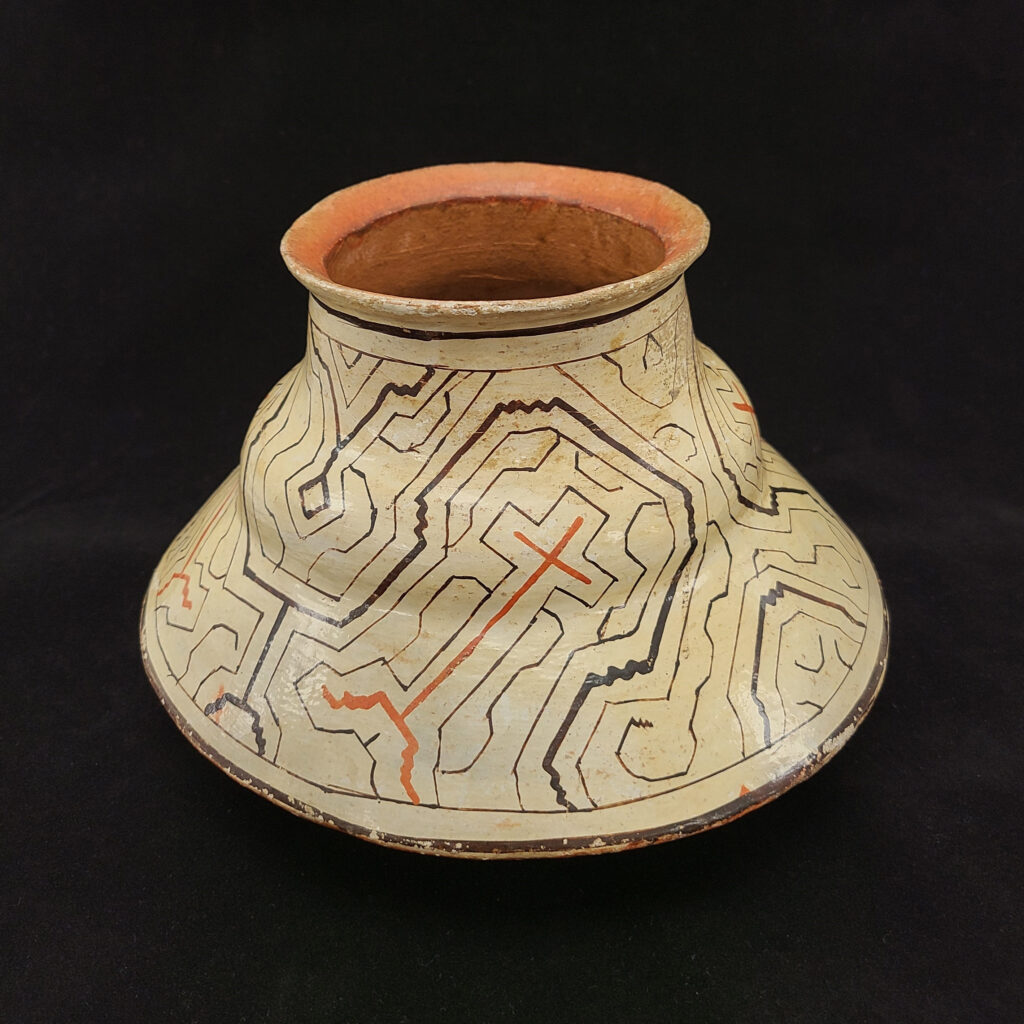Shipibo-Conibo Ceramic Vessel

The Shipibo-Conibo people live along the Ucayali River, a tributary of the Upper Amazon in Peru. They are famous for their polychrome earthenware pottery, like this piece, which they have been producing for more than 1200 years. Shipibo women produce the largest and thinnest coil-built ceramic vessels of any Indigenous group in the Americas. This piece is a small liquid storage vessel known as chomo, one of several common forms of Shipibo ceramics.
Shipibo pottery is made exclusively by women. They build their ceramics using the coil method. After each section of a few coils, the pots are set in the sun to dry so the piece won’t collapse when more coils are added. After they have created the basic shape, the women scrape off the excess material and polish the piece. These steps result in the characteristic thinness of Shipibo pottery. After the construction phase, the pieces are decorated with slip to create a white or red background. Women then use small brushes, often made with their own hair, to paint the designs. The ceramics are fired by placing each piece in a metal pot and covering it with ashes. The metal pot is then placed in the middle of a fire. After firing, the pieces are treated with resin to seal them and create the shiny finish seen here.
Shipibo pottery is covered with intricate geometric designs that reflect their cosmology. The Shipibo believe that in the distant past the designs, known as kené, covered everything in the world. But that ideal world fractured, and the patterns now only appear on select art objects including their pottery. The design used by each woman is unique, inspired by her dreams and visions. Through the use of ayahuasca, a powerful hallucinogen, male shamans can also visualize the patterns, which they used in healing sessions. However, men do not traditionally create physical representations of the designs.
Indigenous people of the Upper Amazon, including the Shipibo-Conibo, are under extreme stress due to the destruction of their environment by outside forces. Unlike many communities that are losing their traditions in the face of this pressure, external interest in Shipibo ceramics is reinforcing their production. The sale of these ceramics on the tourist market is more crucial than ever, allowing the Shipibo to purchase food, medicine, and other necessities. You can learn more about Peruvian Indigenous perspectives on the destruction of their environment, specifically by illegal mining, in our exhibit MINE: What is Ours in the Wake of Extraction.
